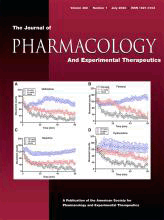
“We provide evidence for the presence of cannabinoid CB2 receptors in some cellular types of the cochlea of the adult albino rat. Cannabinoids and their receptors are increasingly being studied because of their high potential for clinical use. As a hyperspecialized portion of the peripheral nervous system, study of the expression and function of cannabinoid receptors in the hearing organ is of high interest. Stria vascularis and inner hair cells express CB2 receptor, as well as neurites and cell bodies of the spiral ganglion. Cellular types such as supporting cells and outer hair cells, in which the expression of other types of functional receptors has been reported, do not significantly express CB2 receptors in this study. An up-regulation of CB2 gene expression was detected after an ototoxic event such as cisplatin treatment, probably due to pro-inflammatory events triggered by the drug. That fact suggests promising potential of CB2receptor as a therapeutic target for new treatments to palliate cisplatin-induced hearing loss and other ototoxic events which triggers inflammatory pathways.” http://www.ncbi.nlm.nih.gov/pubmed/27564061
“In conclusion, evidence for the presence of cannabinoid CB2 receptor by immunohystochemistry and by RT-qPCR was provided. An immunolabeling of CB2 antibodies in four structures of the adult rat cochlea was found. That was, stria vascularis, inner hair cells, auditory afferent nerves and cell bodies of the spiral ganglion. Up-regulation of CB2 gene expression in animals exposed to CDDP treatment was also detected, when compared with healthy animals. This fact was partially supported by the higher immunofluorescence observed in the stria vascularis of CDDP-treated animals if compared with the healthy ones. These results suggest a considerable promising potential of CB2 receptor as a target of new treatments against CDDP-induced ototoxicity, and probably against other inflammatory diseases in the inner ear. Further research is needed to determine the functionality of CB2receptors in the organ of Corti and the potential therapeutic role of agonists and antagonists of these receptors.” http://journals.plos.org/plosone/article?id=10.1371/journal.pone.0161954
“Study: Cannabinoids a Potential Treatment Option for Chemotherapy-Induced Hearing Loss” http://www.theweedblog.com/study-cannabinoids-potential-treatment-option-chemotherapy-induced-hearing-loss/








